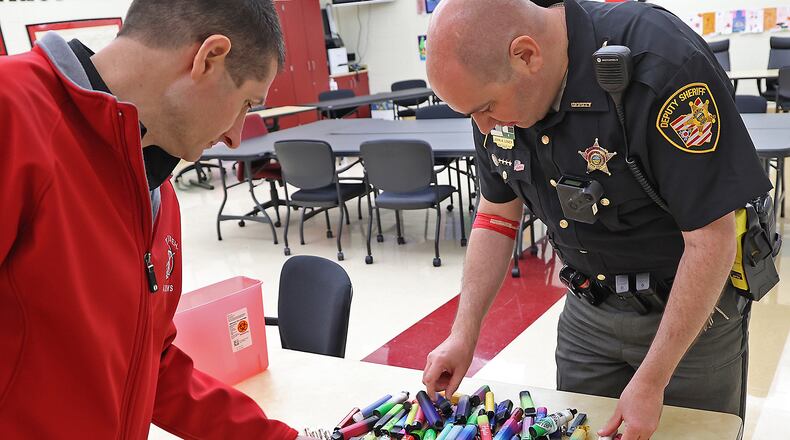According to the 2021 Youth Risk Behavior Survey, which is conducted every two years, 20% of high schoolers in Ohio used an electronic vapor product at least once in the 30 days prior to the survey. Nine percent of middle schoolers were found to have done the same.
”When vaping was kind of first introduced to the market, it was really advertised as a way to help quit smoking, and then it was also kind of made to sound like it was a safer alternative,” Behler said. “Over time, we found that that’s not the case.”
Behler said vaping products contain harmful chemicals and large concentrations of nicotine. She said most vapes advertised as nicotine-free still contain small amounts of nicotine, and only 5mg of the chemical is necessary to develop an addiction.
These chemicals can worsen mental illnesses, interfere with the brain’s development, reduce the efficacy of certain medications and more, Behler said. Flavored vapes contain diacetyl, a chemical that can cause a condition known as popcorn lung, which is a severe inflammation of the lungs that results in symptoms similar to chronic obstructive pulmonary disease (COPD).
“It’s not pretty,” Behler said.
Ohio Gov. Mike DeWine called for a statewide ban on flavored vapes in January, which he said made the products more enticing to young people.
In Ohio and Clark County, many young people are easily accessing electronic vapor products — by walking into a store and purchasing one without an employee checking their ID to see if they are 21 or older as required by law, Behler said.
Because of this, the county health department has begun compliance checks, Behler said. The agency partnered with the Clark County Sheriff’s Office, and both agencies monitor an under-18 volunteer who goes into a tobacco retailer identified as a concern by the Ohio Department of Health and attempts to purchase a tobacco product.
Behler said the health department was not happy with the results of a December compliance check and will do another this spring. She said retailers found to be noncompliant receive education reinforcing the importance of checking IDs and not selling tobacco and nicotine products to youth.
Young people often pick up the habit after seeing their friends, siblings or peers vaping, Behler said. She said it’s often younger children being influenced by older kids or teens.
The health department provides resources to help young people addicted to vaping or other nicotine products quit, Behler said. It uses the platform My Life, My Quit, which is an eight-week program that allows teens to text or call their assigned cessation counselor.
“They’ll work one-on-one with a teen who wants to quit, and they’ll identify their triggers as to why they started vaping in the first place,” Behler said. “And then they’ll also help create a plan for some healthier alternatives.”
Health Planning Supervisor Gracie Hemphill said because the Youth Risk Behavior Survey is conducted every two years, Clark County won’t see an improvement in its numbers immediately. She said the survey acts more like a “snapshot” of the situation during the time the survey was administered.
Hemphill said the health department is hoping to see a decrease in youth vape use and an increase in cessation counseling among those who vape.
“One of the other goals is ... not having as many youth initiate (vaping) in the first place,” Hemphill said.
Credit: Brooke LaValley
Credit: Brooke LaValley
About the Author

